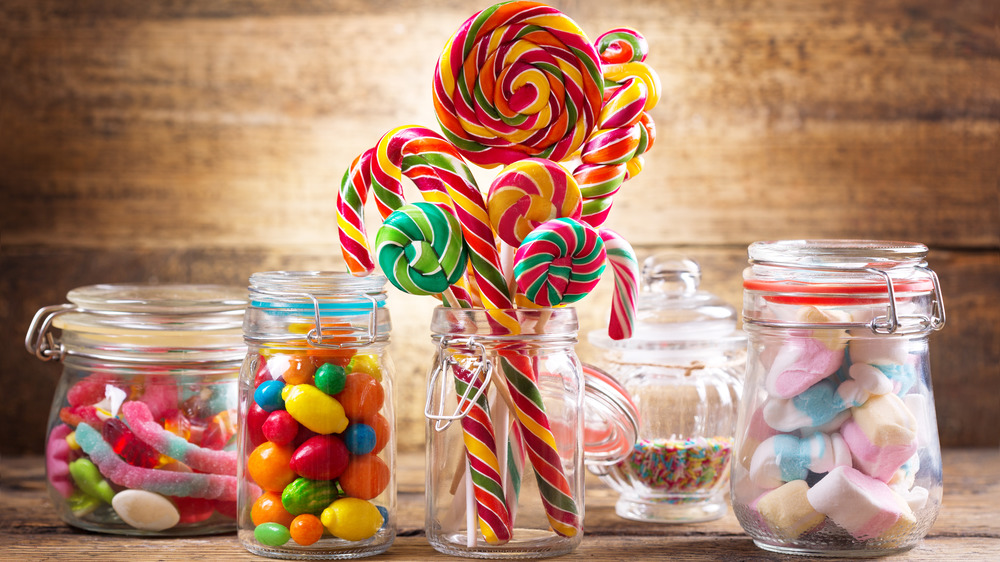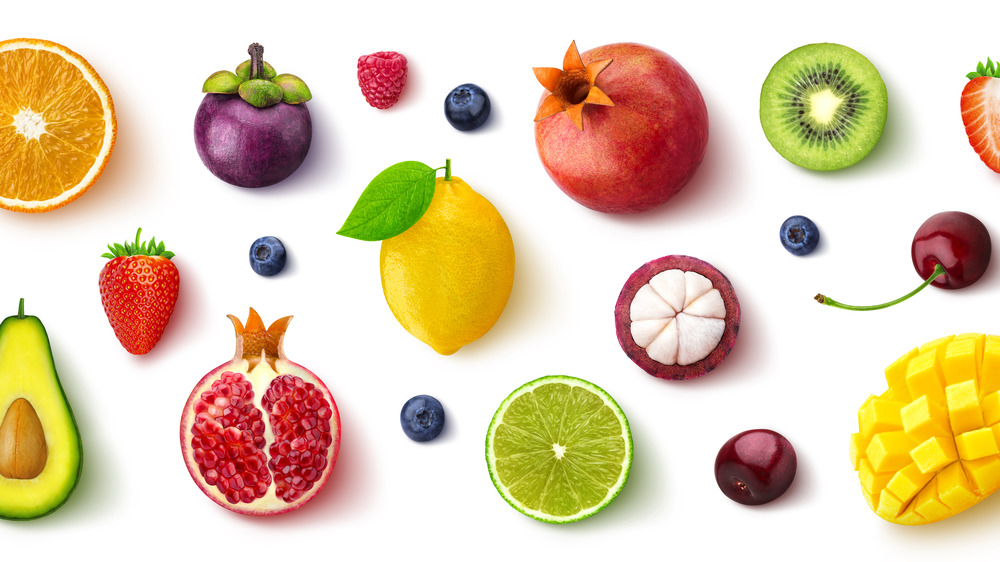Is Sugar In Fruit The Same Thing As Sugar In Candy?
When you're in the mood for something sweet, reaching for a piece of fruit might not be the first thing on your mind. But with many fruits, the sugar content in them could be just the thing to satisfy your sweet tooth, while also being better for your health.
The difference boils down to the kind of sugar found in the food — natural or added, according to SELF. The two are pretty self-explanatory, with natural sugars occurring in food as it is grown. Added sugars are anything extra resulting from the item's production or packaging.
At the chemical level, sugar is sugar, and the body can't distinguish whether it's natural or added. There are several kinds of sugars, including fructose, glucose, and sucrose, according to NPR. Sucrose is actually just the fancy name for table sugar. Most fruits are comprised of roughly equal amounts of fructose and glucose (via Medical News Today).
The important distinction comes in just how much sugar content is found in the food we choose, and what else comes along with it.
Empty calories vs. beneficial nutrients
In a chocolate candy bar, for example, you'll get about 25 to 35 grams of sugar and very little else, according to HuffPost. A can of soda can pack 40 grams of sugar and is full of empty calories. By comparison, the average serving of fruit generally has less than 20 grams of sugar and comes with a boost of fiber, and important vitamins — that's if you choose a healthful whole fruit option.
If the fruit is dried, the sugar content ratchets up significantly simply because there are so many more small pieces in a serving. And smoothies with any kind of added fruit juices are one good way to pack in more sugar. Stick to blending your own smoothies from whole fruits and vegetables, without added juices, to retain the beneficial nutrients.
That's not to say you can't enjoy a piece of candy every now and then. Just moderate the rest of your sugar consumption that day, and be sure whole fruits are the base of your daily diet.


